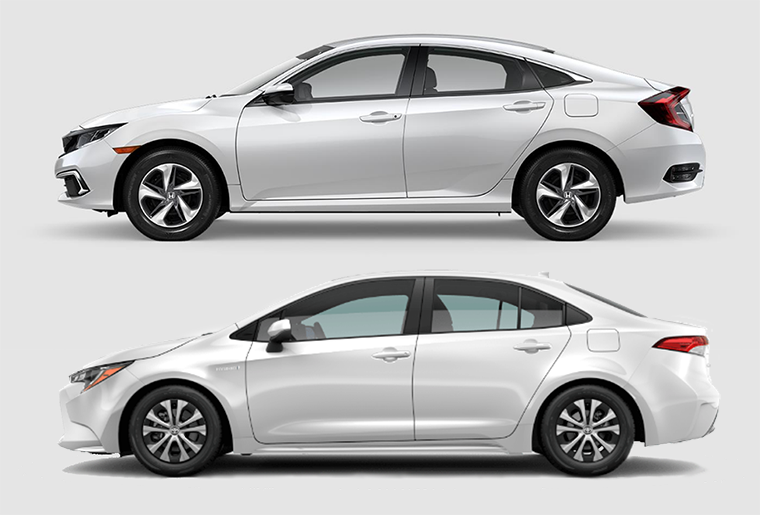
If you’ve been paying any attention to the roads or have shopped for a car over the past decade, you might have noticed that most new, non-exotic cars look quite similar. Brands are now putting a special emphasis on differentiating themselves from other brands with unique headlights and signature grilles, but if you were asked to identify your average midsize car or SUV based on bodywork alone, you would probably find it difficult if you didn’t work in the industry or weren’t an especially enthusiastic car aficionado.
There two main reasons why this is the case.
Honda Sensing: One of the top suites of active safety technologies
Safety
When it comes to safety, some things just work better than others. As safety improves and crash test requirements become more stringent, cars have converged toward specific designs. The massive front ends, for example, increase the length of the crumple zone, contributing to both pedestrian and front occupant safety.
Because of safety reasons, the government has tremendous power over how manufacturers may build their cars. Regulations can cover everything from the materials used for the dash and the curves of the front and rear bumper, to the size and location of exterior lights. With all of these safety-related restrictions, non-exotic cars have become more homologous.
Safety designs have also decreased the size of the greenhouses, leading to smaller glass areas and higher door sills. The resulting reduction in outward visibility is one of the reasons rearview cameras are now mandatory in new cars and there’s been such a push to include active safety features like blind spot monitoring and rear cross-traffic alert.
Fuel Efficient: These are some of the most efficient cars you can buy
Efficiency
Along with safety, car efficiency has also been on a steadily upward trend, and as with safety, government regulations, customer expectations, and simple brand competition have caused manufacturers to converge to the most aerodynamically efficient bodywork designs we know — which generally results in cars being egg-shaped. If you’re trying to optimize a car for fuel economy, it needs to be as smooth as possible, and that means forgoing a lot of potentially stylish-looking exterior bits.
In the past, car designs tended to be about one thing and one thing only: how cool the car looked. Cars today might look more similar to each other, but they’re significantly safer and more efficient. We think that’s a good trade.
The News Wheel is a digital auto magazine providing readers with a fresh perspective on the latest car news. We’re located in the heart of America (Dayton, Ohio) and our goal is to deliver an entertaining and informative perspective on what’s trending in the automotive world. See more articles from The News Wheel.